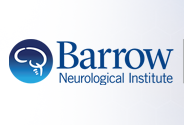Autonomic dysregulation during sleep in Parkinsonian spectrum disorders - A proof of concept.
Document Type
Article
Abstract
INTRODUCTION: Autonomic dysfunction is common in α-synucleinopathies such as Lewy Body dementias (LBD), Parkinson's disease (PD), and isolated REM Sleep Behavior Disorder (iRBD). We analyzed pulse-rate changes during sleep to index autonomic nervous system (ANS) dysfunction in patients with α-synucleinopathies vs. non-synucleinopathy groups expected to have normal ANS function.
METHODS: Patients with LBD (n = 16), PD (PD, n = 14) or iRBD (n = 12) were compared to the non-synucleinopathy groups Alzheimers disease dementia (ADem, n = 26), mild cognitive impairment (MCI, n = 34) or controls (CG, n = 54). Sleep Profiler was used to derive a sleep autonomic activation index (AAI), i.e., ≥6 beat-per-minute increase/decrease, pulse rate coefficient of variation (PR-CV), and automated sleep staging with sleep-spindles and non-REM hypertonia (NRH). Analysis included statistical group comparisons and receiver operating characteristics curves to determine optimal classification of groups.
RESULTS: AAI and PR-CV were moderately correlated across all recordings (r
CONCLUSION: Synucleinopathy-related ANS dysfunction can reasonably discriminate prodromal and manifest PD/LBD diseased groups from non-synucleinopathies. Further studies incorporating AAI into a multivariate classifier of neurodegenerative disorders based on sleep characteristics acquired in the patient's home are planned.
Medical Subject Headings
Humans; Synucleinopathies; Parkinsonian Disorders; Parkinson Disease; Lewy Body Disease; REM Sleep Behavior Disorder; Alzheimer Disease; Autonomic Nervous System Diseases; Sleep
Publication Date
12-1-2023
Publication Title
Parkinsonism & related disorders
ISSN
1873-5126
Volume
117
First Page
105905
Last Page
105905
PubMed ID
37939637
Digital Object Identifier (DOI)
10.1016/j.parkreldis.2023.105905
Recommended Citation
Cho, Yeilim; Levendowski, Daniel J; Walsh, Christine M; Tsuang, Debby; Lee-Iannotti, Joyce K; Berka, Chris; Mazeika, Gandis; Salat, David; Hamilton, Joanne M; Boeve, Bradley F; Neylan, Thomas C; and St Louis, Erik K, "Autonomic dysregulation during sleep in Parkinsonian spectrum disorders - A proof of concept." (2023). Neurology. 1942.
https://scholar.barrowneuro.org/neurology/1942


